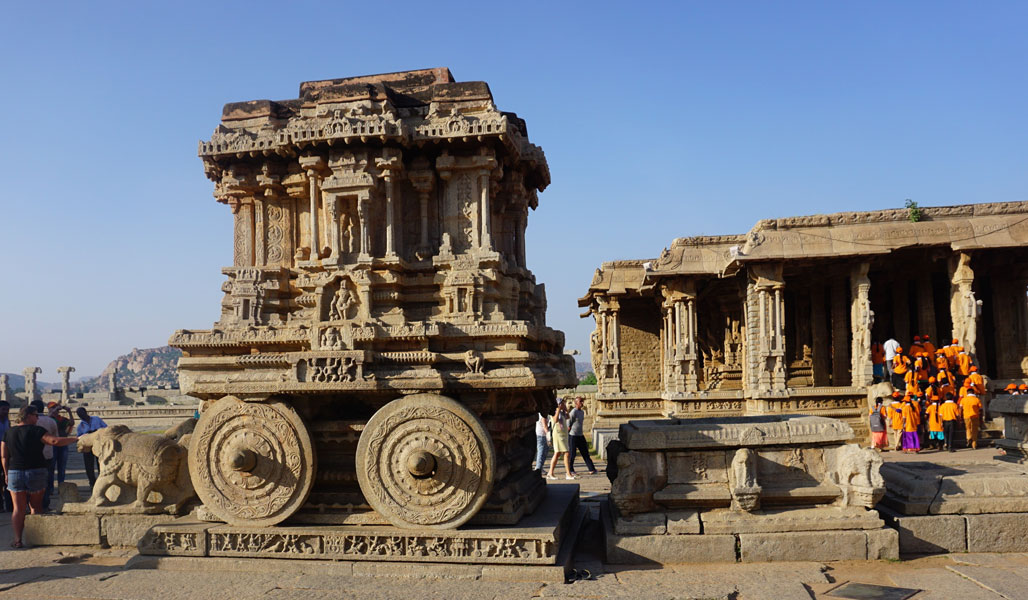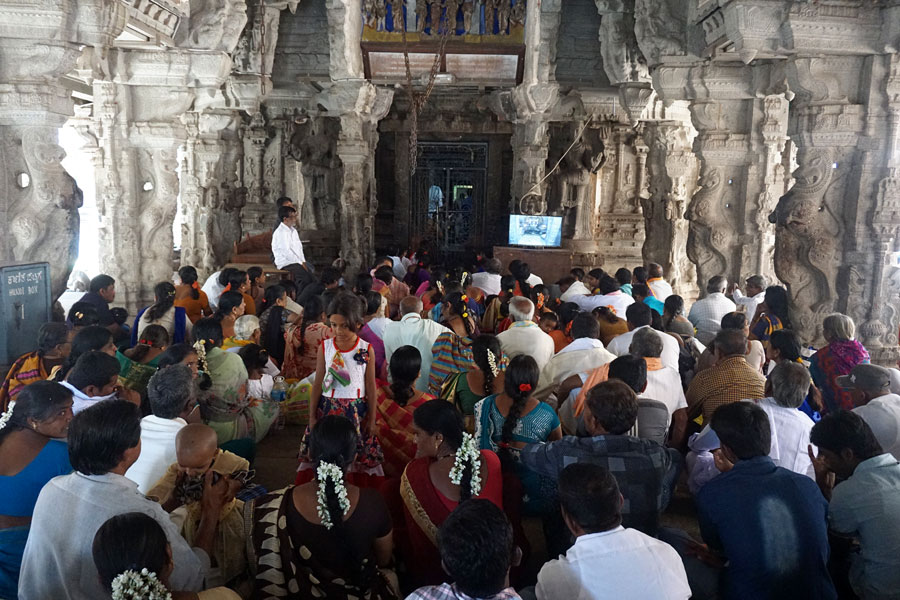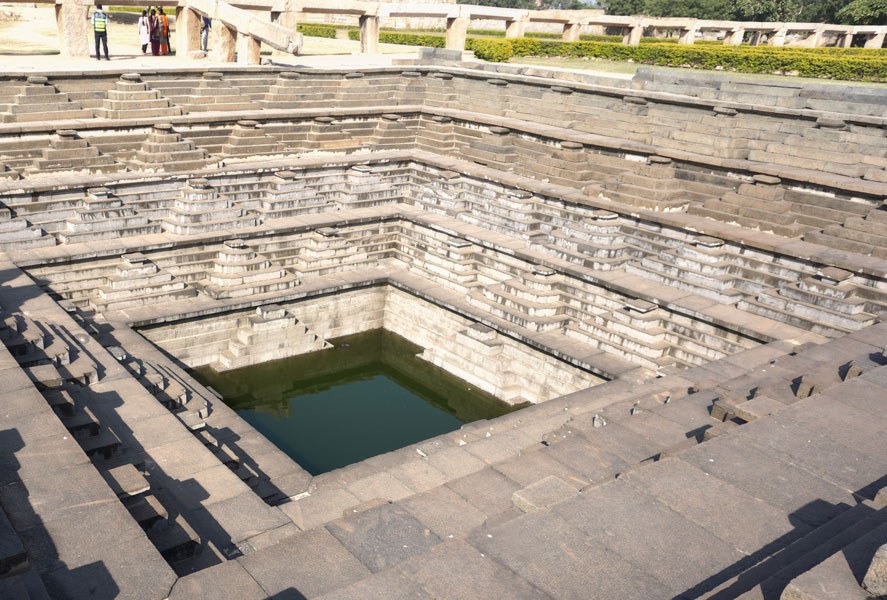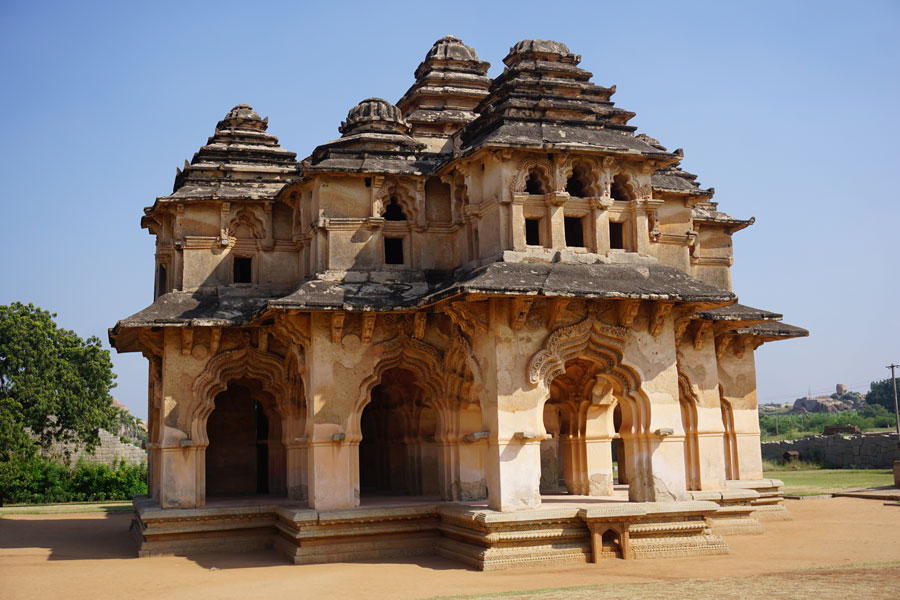The breathtaking ruins of Hampi
Any amount of reading, browsing the internet or mining the social media will not prepare you for the cultural grandeur at Hampi, the capital of the mighty Vijayanagara Empire. It is now a village of magnificent ruins, thousands of giant boulders, caves and heritage structures that beckon globetrotters who are left breathless at the ghost remains of a once-prosperous kingdom.

Located in east-central Karnataka, the City of Victory (‘Vijayanagara’ in Sanskrit) is 12 km from Hospet and sprawled along the Tungabhadra River. Hampi was a bustling, pilgrimage town even before the arrival of Vijayanagara dynasties who chose to make this prosperous centre as their capital. The Virupaksha temple with Lord Shiva as the presiding deity was built by King Pulakesi-II of Badami Chalukyas in the 7th century and later, was expanded by successive kingdoms. With a 52 metre-tall gopuram, the Shiva temple attracts thousands of devotees from far and wide, especially to witness the three-times-a-day poojas and abhishekam at the main sanctum. It is also known as Dakshina Kasi among the devout.
A first-timer should look out for the colourful murals and frescoes depicting the episodes of Ramayana on the ceiling of the ornate mandapam leading to the main sanctum. We are surprised by the large gathering of people, mostly women, sitting across the floor reciting mantras facing the Shiva Linga. “It is rahu kaala pooja and an auspicious time to propitiate Shiva,” quips our guide Ravi Kumar, giving us invaluable insights as we explored the Hampi ruins.

Village clusters
At this venue, clusters of human settlements around temples are common and is in vogue even today. Thus, we have Virupaksha bazaar (market) on either side in front of the gopuram with people around the area using the retail outlets to sell their wares and thingamies. To be precise, the bazaar in front of Shiva temple is 740-metre-long and 45-metre in width leading up to utsava mandapa followed by a Nandi mandapa which has a 3-metre-tall unfinished Nandi (divine cow) carved out of a monolithic stone in 16th century.
Likewise, we notice Krishna bazaar (500 metre-long); Achuta bazaar (360 m); Vitthala bazaar (945 m); and Hazararamapura bazaar in front of their respective temples having just skeletons of their once robust structures which facilitated commerce with foreign traders. “Traders from Persia, Portugal and other European countries vied with one another to buy gold and precious gems from the Vijayanagara markets,” says our guide.
While the Vijayanagara Empire (1336–1565 CE) reigned like a supreme colossus spread over four dynasties for 229 years, the golden era was during the period of King Krishnadevaraya (1509–29) who was very popular and had a charismatic appeal over his subjects. In his regime, the empire extended from Kalinga in the East to Kanyakumari in the South comprising the entire peninsular India plus the Deccan plateau with the oceans forming the natural borders at the two lateral extremities.

Hampi, then known as Vijayanagara, was the second richest city in the world after Vatican (15th century) and according to historians, spread over 650 sq km with a population of 5 lakh by 1500 CE, second only to Beijing.
Compared to its glorious past, modern Hampi is just 25 sq km (may be lesser) comprising towering boulders, hillocks and surrealistic ruins. Here is a montage of unique sights one should not miss out at this heritage village:
- Kadalekalu Ganesha temple:
A 4.5-metre-tall tusker god cut out of a monolithic rock, so called because of its appearance like an unsplit Bengal gram. The Lord carries a tusk, goad, noose and a bowl of sweetmeats in each of his four arms. This was built in 15th century. - Sasuvekalu Ganesha: This 2.4-metre-tall deity was carved in 1506 CE and resembles a mustard seed. It was earlier called Siddhi Vinayaka and is now enshrined in an open pavilion.
- Hemakuta group of temples: A series of 33 shrines and mandapas built intermittently between 9th and 14th century, that means it predated the Vijayanagara empire.
- Balakrishna temple: Constructed by Krishnadevaraya in 1513 CE after the victory in Kalinga war in the previous year. The defaced statue of Lord Krishna is now in Egmore Archaeological Museum in Chennai.
- Lakshmi Narasimha temple: One of the finest examples of Vijayanagara sculpture, the Lord is 6.7-metre-tall and seated on the giant coils of Adishesha, the guardian snake of Vishnu. The seven hoods act as a canopy arched by a lion’s face on the top. The four arms of Vishnu and the seated figure of Goddess Lakshmi on His lap are missing, mostly destroyed by the Sultanate invaders.
- The giant statue was consecrated by the head priest Krishnabhatta on the instruction of Krishnadevaraya in 1528 CE.
- Badavilinga temple: A 3-metre-tall Shiva Linga carved out of a single rock and the legend says it was commissioned by a poor woman (“badari” in Kannada).
A hill valley of Pampa Devi
The rocky hills — Hemakuta, Mathanga, Gandha Madhava, Rushimukha, Anjanadhri, Malyavantha and Jambunatha, to name a few — offer a panoramic view of the valley from the top that delights backpackers and tourists. Hampi was a Pampa Kshetra (holy place) in Krita yuga; Kishkinta in the Treta yuga (during Ramayana); Bhaskara Kshetra in Dwapara yuga (Mahabharata); and Vijayanagara during Kali yuga. “The place got its name Hampi after the advent of the British Raj. Goddess Parvathi, also known as Pampa, meditated on the Hemakuta hill on the banks of Tungabhadra river to win the trust of Lord Shiva and over the years, ‘Pampa’ was malapropped into ‘Hampi’ with the influence of Kannada,” explains Ravi Kumar.

After we’ve examined the heritage structures at close quarters, the guide reminds us that the best spectacle is yet to come, for which we have to travel by a cab. Welcome to Royal City to the southern side of Tungabhadra river. A jig-saw of byzantine enclosures comprising the Royal Residency (of the king, queen, inner circle), noblemen’s quarters (17 living blocks), Army chief’s enclave (Dandanayakka Enclosure); and Mahanavami Dibba (a giant pyramidal platform) make us wonder at the excruciating details and precision with which the Royal City was planned.
Here is a peek into some of the heritage wonders:
- Anthapura Enclosure also known as zanana (women) quarters has two wooden storied palaces and a summer retreat in Lotus Mahal. We have to pass through the palaces of Vira Harihara and Krishnadevaraya (Ranga Mahal) to reach Lotus Mahal. The grand edifice has pillars, arches made of Islamic style, while the towers and shikaras are built in Jain architecture.
The elephant stable, a domed and rectangular structure and god’s quarters point to the lavish style of the royalty.
- Royal Enclosure is the vast administrative office of the empire housing the elaborate Durbar Hall erected by 100 wooden pillars. Spread over 59,000 sq m, this complex is the nucleus of the capital with 43 buildings and protected by lofty double walls.
The Archaeological Survey had excavated a number of buried structures in this complex with their pathbreaking work from 1976 to 1986. The underground chamber for secret conclaves, 23 water tanks including the main pushkarani (sacred tank) were all unearthed by the ASI teams in early 1980s.
Hampi, then known as Vijayanagara, was the second richest city in the world after Vatican. Compared to its glorious past, modern Hampi is just 25 sq km.
- A beautiful pushkarani was discovered in 1986 following the lead given by the stone aqueduct which supplied water to the Royal City through the simple force of gravity. Made of basalt stones, the stepped well is designed as a pyramid.
- A public bathing pool (5-metre deep, 77-metre long and 27-metre in width) is so huge that it could easily be double the size of Olympic pool and was patronised by the common man during the empire’s reign.
- Mahanavami Dibba located to the northeast of the Royal Enclosure is a terraced platform of 35 sq m for the royalty to view cultural processions and religious celebrations like Dussehra. Each tier of the platform has sculpted mouldings in the Vijayanagara style. The three-tiered stone pyramid rises to a height of 8 metres.
- The Queen’s Bath built in Indo-Islamic style has an 8-feet-deep pool in a 15×15 metre water area where the queen and her maids used to have fun time.
Vitthala temple
A showcase temple for the Vijayanagara style of art and architecture. It was built by Devaraya II (1422–1446 CE) and later on, the major portions were added during the reign of Krishnadevaraya.
There are five major mandapas, of which Natya mandapa consisting of 56 musical pillars and Garuda mandapa, a stone chariot with garuda in human form, attract inquisitive tourists.
The main structure has five chambers leading to the sanctum that holds two empty pedestals for deities, Lord Vitthala and Rukmini Devi.
Well-hatched conspiracy
In coordinated moves, the five Bahmani Sultanates attacked Vijayanagara in the Talikote War (1565 CE) in which Alia Ramaraya, the minister who ruled the kingdom on behalf of King Sadashiva (1542–70), was killed. Hearing the impending defeat, the king vacated Hampi with royal treasures including 550 elephants, 1,000 horses and other priceless wealth.
Sadashiva retreated to Penagonda in Anantapur which saw the birth of Araveedu dynasty, the last of the four Vijayanagara lineages. “But the Sultanate invaders looted, plundered and burnt the capital for six months, after which it was abandoned and turned into a ghost city, a no-man’s land,” says Rtn Muni Vasudeva Reddy, President-elect, RC Hospet.
Hampi today
Only after the village got its UNESCO heritage tag in 1986, it gained visibility among foreign tourists. “But the State government has to take up marketing in an aggressive manner for tourism is the only income earner for the locals,” says Ravi Kumar. With a dwindling population (less than 10,000) and strict regulations by the ASI, the youth here have only two options — either be a tourist guide or drive autos to make a living, but they are not assured of a regular income as tourist flow is seasonal.
Pictures by V Muthukumaran
Best time to visit
Winter: November to January.
How to reach
Get down at Hospet Railway station and hire a cab. Hampi is 12 km from Hospet.
